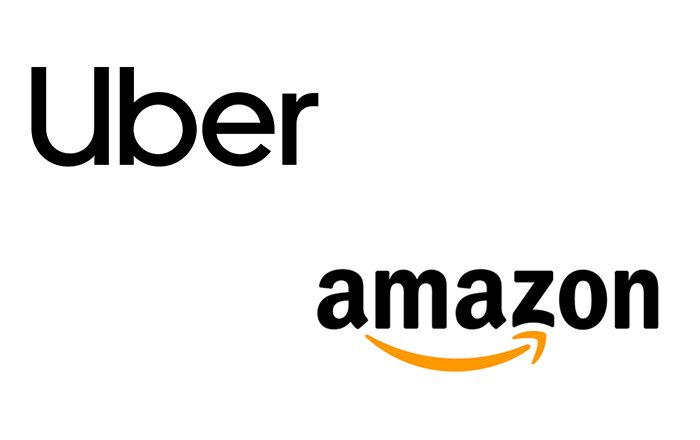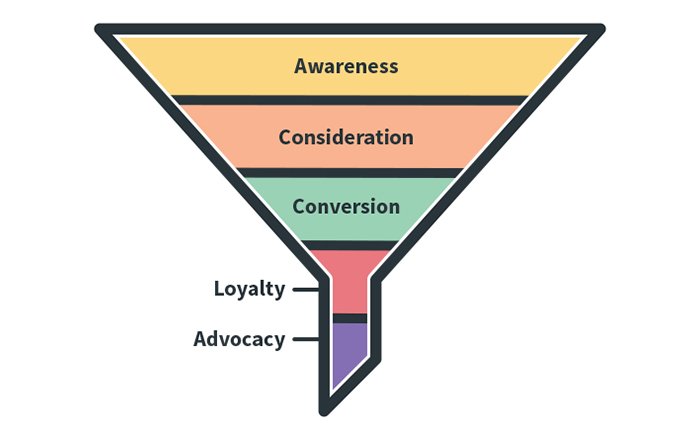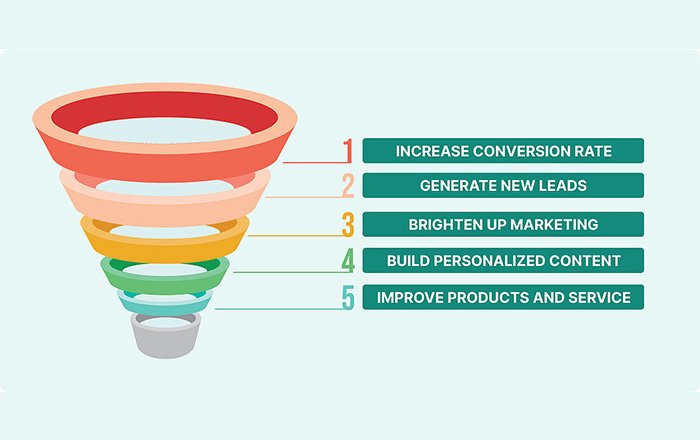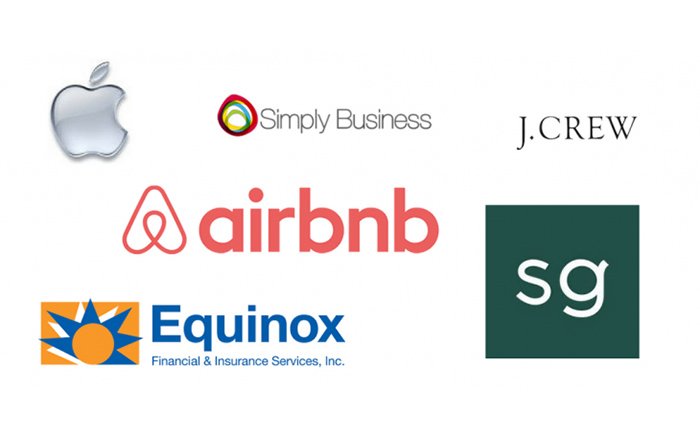Flywheel vs. Funnel: Choosing the Ideal Model for Your Business
Deciding which business model your company operates on has significant ramifications that could mean the difference between success and failure.
To inform this important decision-making process, it is critical to understand both the flywheel model and funnel model and compare them according to their advantages, benefits, applications, suitability for different goals, industries, and organization sizes as well as possibilities for combination or even an evolved quasi ‘hybrid approach’.
The flywheel model stresses customer satisfaction explicitly with no shortcuts; customers are supposed to get loyalty credits in the form of discounts at the highest touchpoints.
The funnel Model takes sequences of smaller unified logical segments assigning customer goal attainments and prospect filters – involving awareness creation right through to conversion via phone calls appointments and sales closure.
In this article, we aim to examine the flywheel and funnel models through an evidence-based lens including definitions of each, key concepts/pieces, and generated advantages/limitations that should be considered prior decision on organizational operating procedures being achieved.
What is Flywheel Model
The Flywheel model is a customer-influenced strategy for growing business success. As opposed to the traditional linear approach of funneling leads in and out, it involves building momentum by delighting existing customers to drive more sales.
The foundation of this model includes continuously adding value to already pleased customers so they can be advocates of your products and services.
By focusing on ongoing customer success – rather than just initial purchase value -businesses are able to leverage social media, referrals, word-of-mouth marketing, and long-term partnerships that bring sustainable growth regardless of pricing fluctuation or competition.
Key principles and components of the Flywheel model

1. Delighting customers
The flywheel model embraces the key principle that delighting customers spins the wheel of revenue success. This is intangible and experiential—offering thoughtful gestures with individualized service, exceeding expectations in customer journeys plus quality products or even talking points covered during each interaction.
It requires product or service assessment and advances based on user-experience perspectives for improvements. The emphasis on delighting customers ensures brand loyalists- helps create stronger opportunities for retention and helpful connections.
2. Focusing on customer success
Focusing on customer success is an integral principle of the Flywheel model. At the center of this approach lies providing exceptional customer experience and supreme value to customers. Every component should be designed to make sure customers are delighted throughout their journey.
Companies should strive to understand what exactly customers need and deliver story-telling and experiences tailored around it with guaranteed continued satisfaction every time.
3. Leveraging customer referrals and word-of-mouth marketing
Leveraging customer referrals and word-of-mouth marketing are extremely influential. These strategies involve sparking engagement with previous customers about your products or services in an organic and authentic way that cements them into loyal advocates within their social circles. As personal recommendations become more worthy than traditional advertising, word-of-mouth becomes one of the most powerful forms of brand-rising.
Benefits of the Flywheel model

1. Sustainable growth
The primary benefit of the Flywheel model is that it encourages sustainable business growth. Rather than focusing on promoting one-time sales, its main goal is in creating an experience for your customers that increases buy-in and loyalty to your product range(s) over time. This leads to organically increasing revenue as more individuals join a cycle of increased engagement with you/your business.
2. Increased customer loyalty and retention
The Flywheel model helps businesses create sustainable and organic growth driven by increased customer loyalty and retention. This model focuses on delighting customers and providing an exceptional experience so that they feel compelled to share their positive experiences with others.
Companies leveraging this strategy can use referral programs or word-of-mouth marketing to encourage existing customers to spread the good news about their brand. With a steady stream of referrals, customer retention is improved allowing companies resources previously dedicated to securing new business, available elsewhere.
3. Lower customer acquisition costs
The Flywheel model allows businesses to gain long-term and sustainable growth through focused customer service initiatives and objective satisfaction. Among the various benefits that this model has to offer, companies are able to see pertinent cost savings in terms of fewer customer acquisition costs.
Example of successful company implementing the Flywheel model

Source
What is Funnel Model
The Funnel model is a linear marketing and sales approach based on the concept of driving customers through various stages. It follows an organized step-by-step process from awareness to conversion, retention, and repeat purchases. Different stages can be described like a funnel that potential customers need to pass through in order to convert into paying customers.
Throughout this journey, customer decision-making must be monitored with data-based insights in order to optimize each stage for greater conversions. Valuable metrics such as current lead sources, channels engaged at each stage, or success rates across a campaign are important factors for developing actionable strategies that will move users down the funnel toward conversion goals.
Key stages of the Funnel model

1. Awareness
This stage involves getting potential customers’ attention and sharing information about the company’s products or services. Successful awareness campaigns should focus on establishing trust and credibility while delivering a message that resonates among their target audience so as to generate interest which can be leveraged to consider purchasing your product or service.
By utilizing various marketing tactics like search engine optimization, sponsored advertising, content creation, etc., companies can actually make sure they are seen in the right places where people are more likely to engage and follow through with purchase decisions.
2. Consideration
The Consideration stage of the Funnel model occurs after prospects learn about your company and products/services during the Awareness stage. Prospects now begin to compare you to your competitors and explore what makes you unique. This process of evaluating companies involves researching prices, reviews, customer support options, features or broader offers.
Effective marketing communications should address these topics from both an emotional and rational point of view, addressing potential buyers’ wants, desires, goals as well as product benefits in detail. The goal is for prospects to decide that they want to move forward with doing business with you instead of a direct competitor– demonstrating consideration– though they haven’t committed yet at this time.
3. Conversion
Conversion is one of the key stages of the Funnel model, where customers move from having an awareness of your product or service to actually making a purchase. The conversion stage requires active engagement and sufficient guidance from your sales and marketing strategies in order to drive meaningful actions from potential customers.
For example, sales tactics such as discount codes, free trials, or attractive offers are often used to convince prospects into converting. Depending on the complexity/value of the product/service you sell this step could mean anything from getting visitors to sign up on an email list all the way through a multi-step checkout process with payments involved.
4. Retention
Retention is the fourth and final stage of the funnel model that seeks to keep users engaged and returning customers over time. To succeed in retention, companies must create an engaging experience that will cause customers to make repeat purchases or ongoing subscriptions.
This can be accomplished through extensive email campaigns following conversion targeting users with tailored offers or discounts, loyalty programs providing exclusive rewards for repeat customers, referrals used to promote gradual growth in the customer base, user-generated content highlighting success stories from existing users, etc.
Additionally, healthy customer service operations are essential to handle any issues promptly and efficiently ensuring smooth experiences for all customers throughout their journey.
Benefits of the Funnel model

1. Clear sales and marketing process
The Funnel model is an incredibly helpful tool to utilize for sales and marketing teams. It helps them clearly define a set of key stages in the customer journey with measurable and distinct goals that should be met for each stage, as well as highlighting possible pitfalls or drains that can affect progress.
The main benefit of the funnel model is its clarity of execution and capability of tracking marketing strategies from lead generation down to conversion rates; so marketers know what works best and where their efforts are most effective.
Additionally, defining tangible goals promote direction while implementing aggressive KPIs inspiring ambitious yet achievable objectives to help meet your business’s goal.
2. Focused lead generation
One of the main benefits of using the Funnel model for any business is focused lead generation. By understanding and segmenting individual customers into target audiences and then mapping a customer journey through the stages of awareness, consideration conversion, and retention, businesses will be able to pinpoint exactly which action or campaign should be taken at each stage to generate leads quicker.
With data from this targeted approach, businesses can personalize outreach messages as well as run highly localized campaigns that deliver quality leads directly to their door. It also allows them to prioritize resources so they can gain maximum return on investment (ROI) with their limited budgets efficiently.
3. Easy tracking of customer journey
The Funnel model offers numerous advantages in driving needed results for businesses. One of the biggest benefits this approach offers is easy tracking of customers’ journey from awareness to conversion and, ultimately, retention. Through the funnel model, every step between each stage – including interactions with website tags and live chat – can be continually monitored to see where improvements could drive increased user engagement and ROI on marketing efforts.
Analytics tools allow businesses unlimited visibility into customer behavior throughout the customer lifecycle, providing essential information vital for optimizing their strategy.
Utilizing comprehensive tracking features help optimize campaigns efficiency and increase the user base more effectively at all stages from paid ads to SEO initiative across multiple channels such as websites or social media outlets.
Plus, this type of insight enables companies to observe purchasing trends and buyer behavior for any changes in content, and UX/UI which can ultimately generate more revenue from acquired customers. All that data combined presented through the funnel model facilitates existing CRM systems used to develop customer loyalty programs and increased brand awareness.
Examples of successful companies implementing the Funnel model

What to consider for choosing Flywheel model?
1. Focus on customer experience and satisfaction
In contrast to the Funnel model—which centers on short-term revenue and campaign success—the Flywheel model focuses more heavily on customer experience and satisfaction (CX).
Additionally, businesses wishing to leverage the Flywheel should have a strong existing customer base or access an ample pool of potential referrals for this part of the strategy to be adequately effective. While this can represent a challenge from the outset due to cost constraints and audience breadth requirements, there are nonetheless many companies benefiting greatly from utilizing the Flywheel.
2. Long-term growth and sustainability
Companies using the Flywheel often start with careful customer segmentation to easily identify segments that enjoy a better return on investment (ROI). Investment in product or service improvements based on user feedback helps ensure customer success and reinforces the flywheel effect.
Continuous cycles of feedback mean revenue per customer increases while the cost of acquisition stays low due to positive reviews and word-of-mouth referrals. A focus on long-term sustainability through consistent customer experience is key in the Flywheel model.
3. Strong existing customer base or referral potential
Companies with a diversified and loyal customer base have more success implementing the Flywheel system because they can leverage their satisfied customers to generate referrals and additional growth.
A significant number of customers may typically be needed for these referral-based programs to thrive, but even smaller companies can do this given enough time to invest in building relationships with their customer base. Those who already have strong word-of-mouth, reviews, and endorsements from past or current customers will also find it easier to build a successful Flywheel program.
What to consider in the Funnel model?
1. Short-term revenue and conversion goals
When considering the Funnel model, short-term revenue and conversion goals should be paramount. If increasing immediate sales is top of mind, this can function as a goal your team can dedicate resources to meet. Your business should have a detailed sales process that helps turn leads into prospects, and then prospective customers into invested stakeholders in the success of your company.
Understanding exactly how each potential customer moves through the funnel will provide an efficient route to effectively convert those leads into paying customers able to boost sales rapidly. Measurable such as click-through rates and location allow for tailored tracking of activities.
2. Need for clear sales and marketing process
Since all aspects of the Funnel model rely heavily on one another, companies must dedicate time and energy to developing an efficient strategy and action plan.
Clear processes must be established for lead capture, nurturing leads through each stage of their customer journey, then refining those strategies over time based upon feedback from your customers Data also plays an important role; metrics such as open rates, click-through rates, etc., will help inform business decisions so businesses can identify areas of strength – as well as opportunities for improvement.
3. Limited resources or budget constraints
The advantage of this model is that it allows businesses with a limited budget to focus their efforts on marketing and sales activities related to customer acquisition without having to invest significant costs into areas such as customer service or word-of-mouth marketing.
Additionally, funneling customers along preset pathways makes tracking progress and performance levels easier, allowing more optimal allocation of funds in fewer areas.
Conclusion
Choosing the right model for business success is extremely important. Businesses need to keep assessing their needs and goals, adjusting their strategies if needed, and monitoring results over time.
The Flywheel model focuses on customer delight and fostering relationships while the Funnel model emphasizes lead generation that tracks customers during stages of the sales process. Both models offer distinct advantages, businesses need to choose which model works best for them as goals and strategies change.
- Contrasting Mobile and Web App Onboarding: Variances, Effective Strategies - September 19, 2023
- 5 Key UX Principles for Enhancing Product Adoption - September 5, 2023
- Flywheel vs. Funnel: Choosing the Ideal Model for Your Business - August 22, 2023

